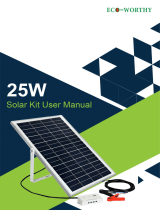
www.hyundai-es.co.kr
Page 2 of 13
Sales Office
4th Fl., First Tower,
55, Bundang-ro, Bundang-gu,
Seongnam-si, Gyeonggi-do,
13591 Korea
Factory
313, Soi-ro, Soi-myeon, Eumseong-gun,
Chungcheongbuk-do 369-872, Korea
1.3
· Before installation, recommend preventing the module from exposure to direct sunlight or other light
source. (If modules are exposed directly to sunlight without connection, each module generates over
DC 30V, which is potentially hazardous.)
· Modules are heavy. Be sure to have more than two persons with anti-slip gloves on carry each PV
module. Do not throw and drop PV modules.
· Do not sit, stand, step, walk and/or jump on the module, including the frames.
· Do not drop or place objects on the modules. Do not place excessive loads on the modules or twist
the module frame.
· All installation equipment and PV modules must be kept in dry condition during installation.
· Check the current and the voltage before connecting the line. There is potential hazard in case of
higher voltage in series connection and higher current in parallel connection.
· All PV modules must be earthed by using earth device. Safety check for all other parts of systems
should be finished before installation to prevent any electric hazard.
· Do not use any damaged PV module, where it may cause fire, electric shock or injury.
· Do not focus light on a PV module, where it may cause fire and damage.
· Do not touch live parts of wires, cables, connectors, or junction boxes, in order to prevent electric
shock and injury. Be sure the circuit breaker is off if it’s applicable. Always use appropriate safety
equipment. (Insulated tools, insulating gloves, etc.)
· Do not re-arrange bypass diodes, where it may cause electric shock and injury.
· Do not disconnect the cable when the load to module is engaged.
· Check applied Class for module after installing the module.
· Do not remove any labels.
1.4
· In order to prevent any performance drop, damage, or incapability, do not use paint and adhesive
material to the module surface.
· Do not leave modules in places where flammable gases can be generated or collected.
· Do not leave un-fixed and unsafe PV modules unattended.
· Do not wear metallic rings, watchbands, ear, nose, lip rings or other metallic devices while installing
photovoltaic systems.
· Installers should be careful of module’s sharp parts(ex: the edges of module)
1.5 General Safety
The following requirements should be kept during installation and inspection.
· Check the inspection requirements by authorized personnel.
· When installing the system, abide by all local, regional and national statutory regulations.
· System designer and installers should secure safe installation of PV modules. All installation must be
conformed to all fire safety regulations. Additional structures can be applied for installation. If
additional equipment is applied, it is necessary to check the fuse status, earth error and system
isolation.
· Do not use different types of PV module in a same module array.
· Abide by the safety regulations for all other components within the total system.













